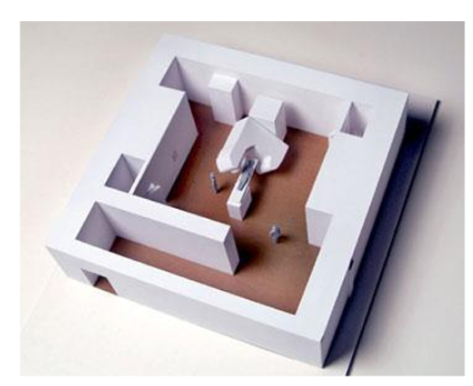11. Materials for barriers & Neutron Protection
1/12
There's no tags or description
Looks like no tags are added yet.
Name | Mastery | Learn | Test | Matching | Spaced |
|---|
No study sessions yet.
13 Terms
What materials are barriers in a vault room usually made of?
concrete cuz its cheaper (and also absorbs neutrons cuz it’s made out of water)
If space is at a premium, what materials can you use to make the Vault instead of concrete?
lead or steel, but it is more expensive
What is the primary barrier for orthovoltage made out of?
3/8 inch of lead
Same thickness of a material for KV x-rays (diagnostic or therapy)
Traditionally, on what floor is a radiation therapy room located in the hospital?
Ground floor or basement
Traditionally, the RTT vault Room Design is what?
a Maze

Why are RTT vault rooms designed as a maze?
Dramatically reduces shielding needs at the door
The maze should create at least __ scatters (#)
2 scatters
Lead shielding at the door if the room is designed as a maze should be about __ thick
6 mm (~ 3/8 inch) lead
Room design should be undertaken by a team (designing team) that should include about 6 people:
hospital administrator - heads the project
architect
physicist
department director
chief tech
equipment rep
Neutron protection is needed for energies greater than __
10 MV
Neutron contamination peaks at about ___ energy, and then levels off after that
20 MV
What is the most practical material for neutron contamination?
Concrete (cuz the water absorbs neutrons)
Door shielding for neutrons. What materials are used?
Most common material: Boron or Polyethylene
You still need: lead or steel for x-ray protection